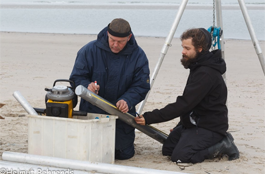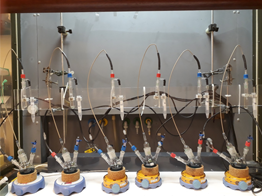Topic: Groundwater microbiology
Research topic 3: Groundwater Microbiology
To date, little is known about microbial communities, functional diversity, and metabolic processes in the subterranean estuary. Samples will be taken at the same stations as for submarine groundwater biogeochemistry (research topic 2 Groundwater composition) in the intertidal beachface at the recharge zone where seawater is introduced into the beach sediment and at discharge sites where groundwater is released to nearshore waters. To elucidate the active prokaryotic (e.g. nitrate, sulfate, and iron reducers) and eukaryotic (e.g. microphytobenthos and meiofauna) communities and their response to environmental changes, we apply next generation sequencing of ribosomal RNA. Additionally, denaturing gradient gel electrophoresis (DGGE) and quantitative PCR of key-genes for the respective metabolic processes are performed. We also plan small scale surveys across the beach face and around seep sites using hyperspectral imaging to detect microphytobenthos and measure its spatial distribution and temporal variability as a function of submarine groundwater discharge (SGD) composition and flux. To evaluate the microbial metabolism in beach sediments, we are also conducting measurements of oxygen consumption, N cycling (nitrification, denitrification), and Fe release (Fe reduction) in flow-through reactor and slurry experiments.
Project Microbial Community
Project Oxygen and Nitrogen Cycling





![[Translate to English:]](/f/5/_processed_/3/2/csm_ICBM-Logo-transparent-_91fe1c6774.png)